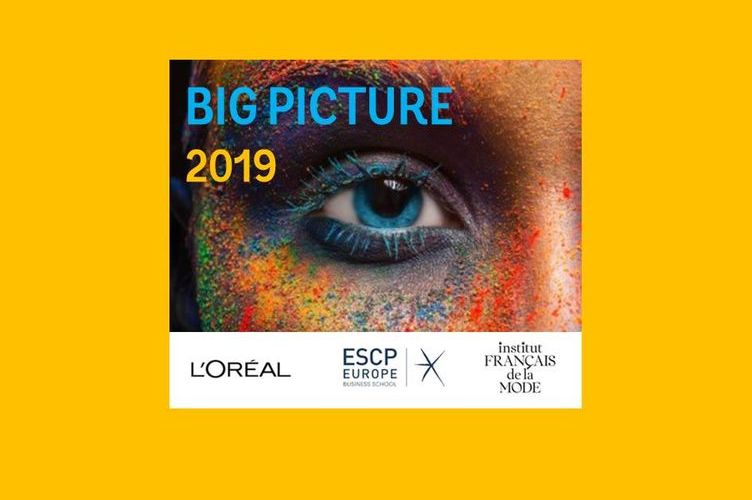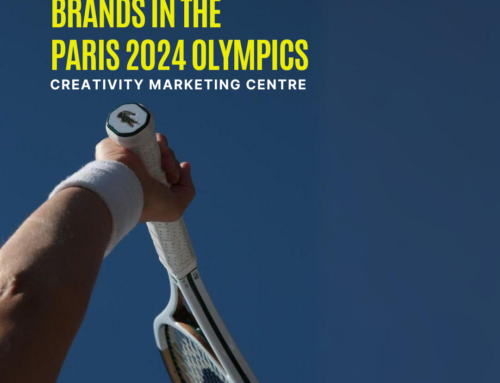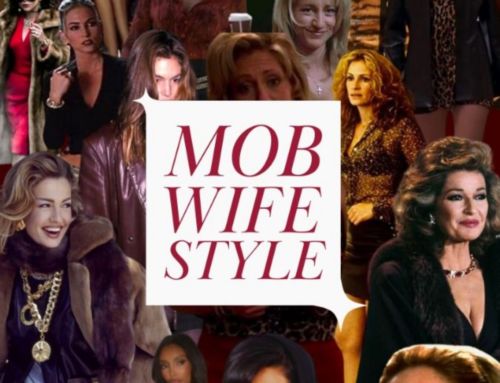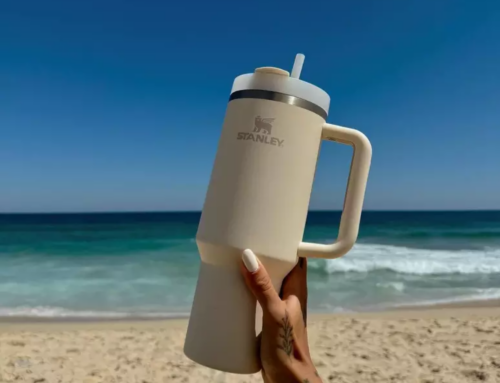The Power of a Strong Concept in Marketing #BIGPICTURE2019

Written by Laurent François, Creative Strategist and Founder of RE-UP
 Last month, I had the opportunity to be a coach for the 9th edition of the L’Oréal’s Big Picture. Big Picture is a week of creative work which brings together students from the ESCP Business School MSc in Marketing and Creativity and from the IFM MSc in International Luxury Management. This promising talent are tasked with developing a concept and producing a video in less than a week related to a key topic provided by L’Oréal.
Last month, I had the opportunity to be a coach for the 9th edition of the L’Oréal’s Big Picture. Big Picture is a week of creative work which brings together students from the ESCP Business School MSc in Marketing and Creativity and from the IFM MSc in International Luxury Management. This promising talent are tasked with developing a concept and producing a video in less than a week related to a key topic provided by L’Oréal.
This year, the amazing Irene Garcia Turcan, International Digital Transformation Director and Diane Hecquet, Digital Transformation Manager for Yves Saint Laurent led the project. The brief was to develop and present a vision for what a YSL-relevant, Gen-Z compliant shopping experience will be in 2025.
I obviously won’t reveal the strategic elements, nor the great ideas from the groups. But here are some of the learnings I got from coaching these 46 outstanding students, along with L’Oréal Professor of Creativity Marketing Dr Marie Taillard and Programme Head at IFM Brad Fujimoto, my partners in crime.

1. Some of the answers are in the brief
It might seem obvious but a great brief actually reveals a lot regarding what is at stake.
Both what’s written explicitly and what’s said can conceal some hidden gems. Just like in a brainstorming session, those elements what can seem odd or random can actually become potential routes for great ideas.
The most successful groups actually questioned – a lot – all the terms which were in the brief, trying to make sense of them, also diving into their etymologies.
Takeaways:
- Words have significance and are “loaded” with cultural meanings: tap into them, be passionate about them, challenge them and make sure you understand them
- There’s a brief, and then there’s the way you understand it: it’s as valuable as the concept as it means that you’re working on a way, an approach to make sense of it all
2. Talk to people: find them, interview them
It was a surprise to me, but most of the groups initially consolidated learnings from reports widely available online, mostly from consultancy companies (ie: McKinsey, Bains etc.). It taught me two things: 1 – consultancy firms know how to market themselves, 2- consolidating reports mostly leads to average thinking, not an insight.
Luckily very quickly, the groups leveraged their international backgrounds and started to interview “real” Gen Z. The learnings which came were very subtle, very deep, very comprehensive. It does not mean that qualitative surveys or “free” interviews replace quantitative data. However, from the chit-chat emerged a lot of sparks, of great entry points, which can greatly influence the way data is gathered or sought after.
Takeaways:
- Real life chit-chat can be meaningful to crack parts of the consumer’s expectations
- There’s a virtuous circle between “hard” data and more human ways of making people reveal their latent needs
- Kill buzzwords: they generally hide what’s deeply at stake, the insecurity as well as the over-confidence of people
- Testimonials, real quotes impact an audience when it comes to presentation: get them
- You don’t need a lot of money to get tons of learnings: start by asking your inner circle
3. The “concept”: a tough notion
The word “concept” is over-used in marketing, advertising. But we’ve quickly realized that there was a strong confusion with “activations” and “tactics”. It’s obviously easier to dive into executions, point-of-sale experience, design of an app than to really take a step back and “conceptualize” in only a couple of words.
This construct was tough to consolidate at the early stage of Big Picture. But the best groups had some “eureka” moments. As many great concepts, when they appeared or were finally formed, they all looked sort of obvious.
Takeaways:
- You need to unleash yourself and truly embrace the concept; working on tactics and activations without a good concept might be a way to hide, of going down too easy a track. However, with a good concept, tactics and activations are far easily filtered and come more naturally
- A good concept totally eases the way you present your ideas to an external stakeholder. It makes for an easier sale
4. Team feedbacks are a weapon
The main difference with a traditional essay is that there’s no “right” or “wrong” answer. In that sense, creating an environment of positive feedback loops is crucial. It’s important to orchestrate a certain conflictive and critical thinking, in which the idea is not to demolish one’s idea, but to see how it can better plug in the overall vision. By repeating, finessing, pushing each other forward, the team can first share a sense of belonging, create a mutual output and already anticipate future bones of contention or challenges. The best teams figured this out and it was truly impressive to see during their pitch session how they had bonded.
Takeaways:
- Tackle the problems internally first: if you don’t, it will happen during the pitch session
- The more you use conflicts as a way to go from point A to point B, the stronger your team will be
- You don’t win with one talent: you need harmony within your team
5. It’s all about a concept… matched with a brand
The brief was to find a future shopping experience… while making it “on brand”. And as in a lot of briefs, it is tough to reconcile these two sides of the equation. The best teams found the sweet spots (and we’ve seen how versatile they could be!) to justify the overlap of a brand at its best self with a sort of latent tension.
Takeaways:
- Never forget the brand and its DNA; otherwise, you’ll end up with a concept which can be a brand on its own, and will not work for the brand you’re pitching to
- Brand territory can be vast. In the case of YSL, it’s a magnificent resource, full of narratives, full of complexity. Be curious and explore this heritage
Laurent François is the Creative Strategist and Founder of RE-UP – an innovative agency with offices in Amsterdam, Paris and Tokyo with an extensive experience within the luxury and the beauty industries.
Would you like to learn more about the teams competing at this fascinating challenge? How was their experience working on a project for one of the World’s most exciting brands? We invite you to check the Big Picture 2019 – Behind the scenes blogs here.





